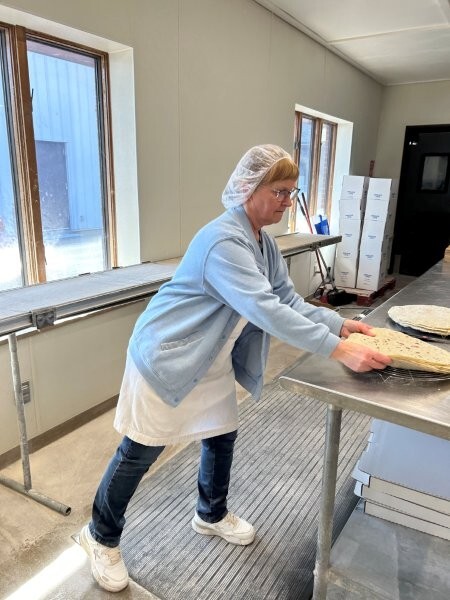Norsland Lefse Factory Modernizes Production with Advanced Machines to Boost Quality and Output
10th Apr 2025
Norsland Lefse has revamped its production line and added new essential machines at its Rushford factory. Two new machines now form the lefse; in addition, a new potato cooker, a new potato ricer, and a new potato baller machine have been installed. Soon a new conveyor griddle will also be installed.
After 44 years of use, the custom lefse rolling machines at Norsland Lefse had reached end of life. The machines had a lot of heavy, moving parts; each of the machines required costly, custom repairs every time they broke down. The company that originally made the machines is no longer in business; now new parts had to also be custom made for each of the unique machines. Zach Lind, production manager, declared, “It was a marvel for them to run that long (44 years)—fantastic engineering!”
Lefse is very precise; it requires a tight tolerance and needs to be rolled very thin to 1.5mm. After struggling last holiday season to keep the old machines operating and having a lot of wasted product, the team searched for a solution.
An all-in-one machine which rolled and baked the lefse was tested, but it didn’t work the best for lefse. Additional flour was added to the recipe used with the old machines, but that resulted in a tougher product.
Norsland then found a small testing press that worked well to produce lefse. They kept the small press and added a big press. The automated presses produce a consistently quality product. The big press alone will double production at the factory. The presses have very simple components with only two moving parts—a hydraulic cylinder and a moving conveyor belt. Rather than rolling, the new machines press the lefse thinner and thinner every five seconds until the optimum thinness is achieved. A perfect, round lefse is produced every time. The same exact original recipe is used now; the lefse produced is prime quality lefse, tender, thin and flavorful. The press has a 20 inch by 20 inch press plate. Lefse is pressed to 16 inch diameter which results in a 12 inch diameter finished lefse.
At this time, the formed lefse is removed from the conveyer belt and fried on stationary grills just as before. When the new conveyor griddle is installed, it will have twenty-four-inch wide planks which will come together to provide a seamless grill surface. The lefse will travel through a tunnel and bake on both sides as it moves along. This grill will support future production growth. The conveyor grill will have a vent hood to exhaust all the heat produced when baking lefse.
The same staff will now be able to produce more than double the amount of lefse. There was a learning curve with the new machines. Less hands-on work with the new machines made precision more important. Safety is stressed with the new machines; each night the machines need to be taken apart, cleaned and reassembled correctly. Staff was at first somewhat intimidated by the large machines, but overall found the machines fascinating and appreciate the work saving aspects.
Zach Lind has been working for Norsland Lefse for about a year, but has a lot of prior experience in the food industry. He ran a fish processing company as well as Driftless Trading Post, a restaurant in nearby Peterson. His restaurant emphasized local foods; as a result, he was a good customer of Norsland Lefse, purchasing large quantities of Uffda chips.
When previous Norsland Lefse owner Mark Johnson asked him to help out during the holiday season, Lind decided to do it since it was his slow time at his business. In January, Johnson suffered a stroke; Lind stayed on to run the company. When the McDonald’s purchased Norsland, Lind stayed on to manage production and wholesale development.
While Lind had never worked in a bakery, he found the production line aspects of the business very similar to fish production—food, recipes, development and HACCP (a food safety management system).
The installation of the new machines took about two weeks. Some refinement was needed to incorporate the new machines. Electrical service for three-phase power and a transformer needed to be installed as well.
The building has plenty of space for future growth; there is room to install a second production line with a 52 inch press which would be able to press four lefse at the same time. A full basement is empty and available as well.
With the new machines in place, Norsland Lefse is now working on some new products. A gluten-friendly lefse will be coming out soon. The lefse will be made with gluten-free flour using the same production line.
Sweet potato lefse, both regular and gluten-friendly, are also being developed. Norsland plans on marketing the lefse as wraps to the food service industry. Potatoes make a more flavorful choice for gluten-friendly food. At Norsland’s onsite cafe, pizzas made with a lefse crust have already found a home on the menu.
In closing, Lind exclaimed, “There’s a really exciting future; in every conversation with food experts, they are also excited about what could happen with Norsland Lefse and its potential growth!”
Check out the pictures below!
1. Production manager Zach Lind took a break to share the story of the revamping of Norsland Lefse.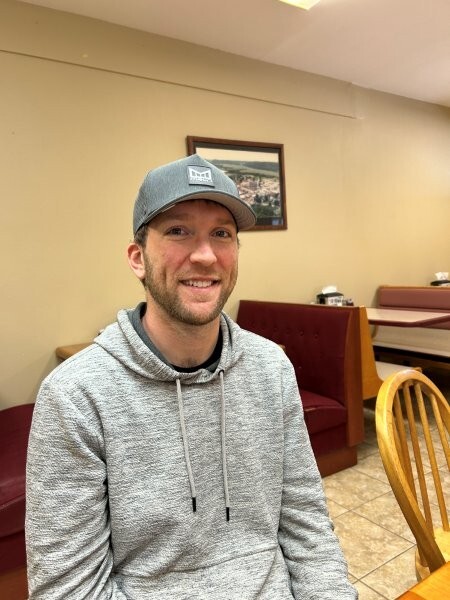
2. Zach Lind loads the lefse balls which resemble large hockey pucks into the press.
3. Lefse rounds come out of the press perfectly formed and thin.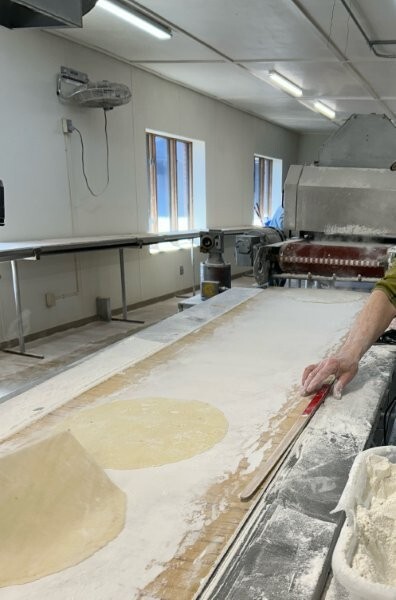
4. Donna Johnson waits fior the next lefse to come down the conveyor.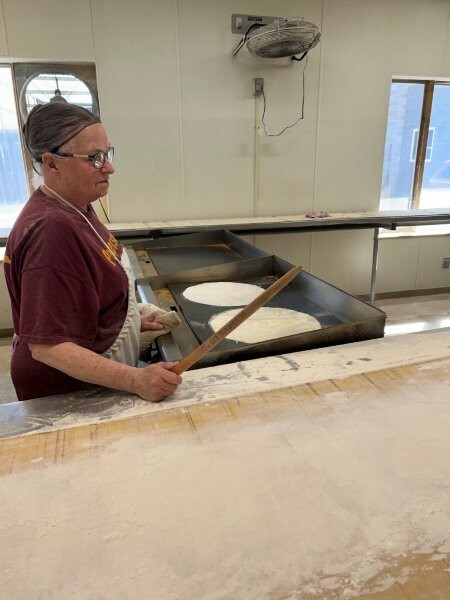
5. After removing the lefse from the conveyor belt, Donna Johnson places the lefse on the grill.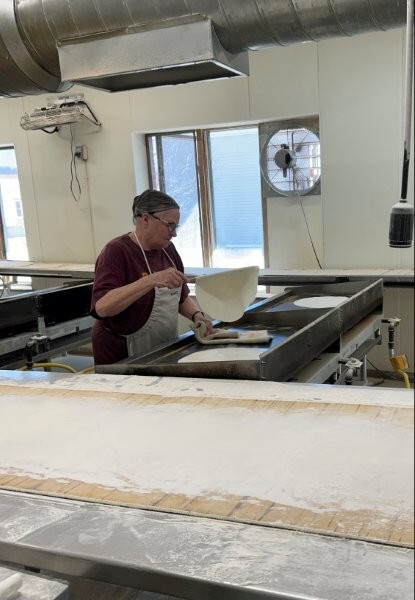
6. The Lefse rounds baking on the grills.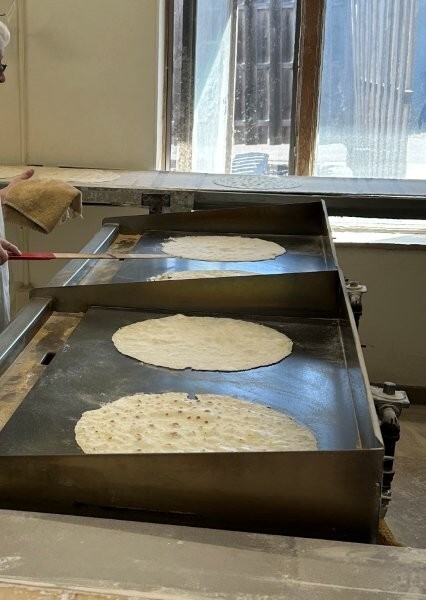
7. Cindy Bendickson removes the finished lefse from the grill.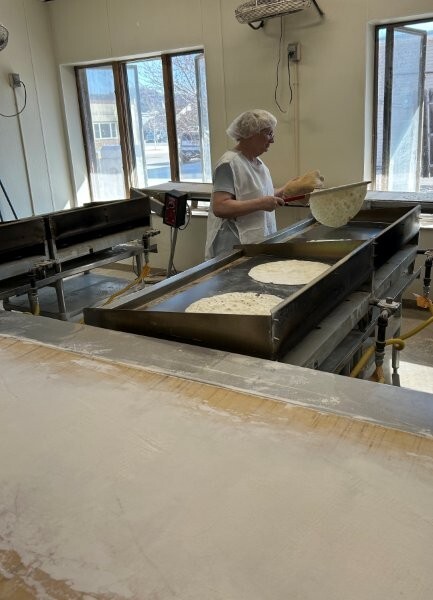
8. Cindy Bendickson places the finished lefse on a conveyor belt which carries it the packaging area.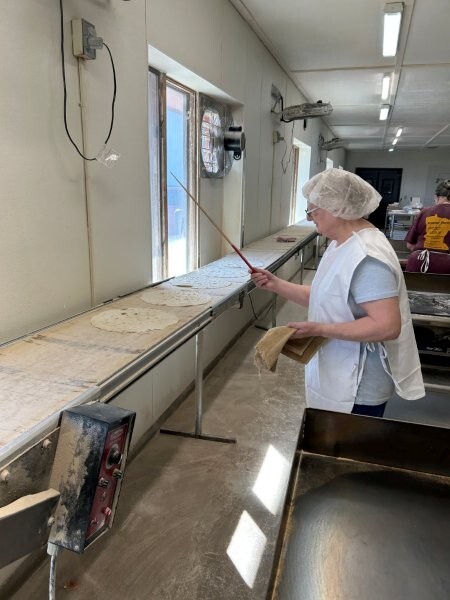
9. Wendy Agrimson picks up the lefse at the packaging area.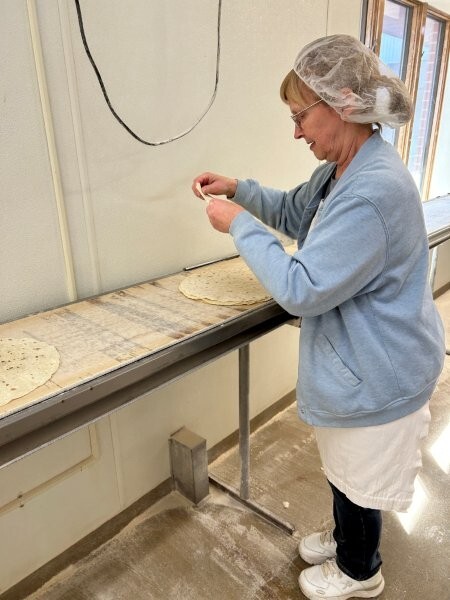
10. Wendy Agrimson stacks the finished lefse at the packaging station.